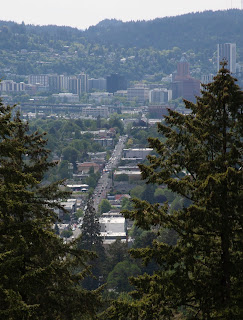Lynsey Addario's book: "It's What I Do"
Lynsey Addario’s book, “It’s What I Do”, was an exciting a heartbreaking read. She wrote of her experience as a woman, a photographer, a journalist, and, lastly, a mother.
One of the stories that stood out to me the most was at the end of her book in Ch. 13 She was pregnant and squeezed into a frantic crowd in Gaza. She started to feel afraid for her baby and yelled “baby!” pointing to her stomach. All of the men around her created a human shield to protect her from the pushing crowd and she continued to shoot. I liked this story because it really illustrated the protective culture around pregnant women in the area. It didn’t matter if they knew her or who she was affiliated with, the fact that she was pregnant was enough for them to protect her. It felt like through all the inhumanity she had seen, everyone was humane at that moment.
Addario has a special way of approaching her subjects. She is very respectful, but bold in receiving and maintaining consent. This rapport she has with her subjects really shows through in her work and, I feel, allows her to capture extraordinarily raw and candid shots. The shot of the soldiers carrying Captain Dan Kearney’s body after a firefight in Afghanistan is a great example. Despite the intense emotion and obvious trauma of the situation, she managed to not only snap a powerful photo but still managed to get consent from the soldiers while also managing her own emotions. She showed this ability in Darfur as well. Addario was able to capture the experiences of the women of Darfur in a very unique way that shed light on the conditions of living as a woman in that part of the world. In this way, I can relate to her passion for shining a light on dark situations. Her unrelenting drive to do so is applaudable. I am happy that there are people like her in the world because, at the end of the day, I would rather be safe at home looking at her pictures and reading the articles than witnessing it with my own eyes. It would absolutely overwhelm me. I believe you have to be a little crazy to do what she does and I am ever grateful for people like her and their dedication to truth.
There is a lot you can learn from Lynsey Addario, not just about photojournalism, but about being human and having human experiences. If she was able to take the pictures she took, and get names and consent from her subject, regardless of language barrier or often safety, I can approach a stranger about my photojournalism class. It is all your perspective of the situation. If it is important enough to take a picture of, the awkwardness of getting consent isn’t an issue. After reading this book, I developed a deeper respect for what it is to be a photojournalist and for the powerful photos they deliver.

The photo above, from Ch. 7 of Addario’s book, stood out to me because it showed how casual death was in the area of Sudan she was covering. Bodies were lying all around and no one collected them. They were just left to turn to skeletons. The men in the background walk by these bodies as though they were a shrub or a pile of rocks. It brings a great perspective to how normal brutality can become in a war zone. Another photo that was especially striking, from Ch. 5, a picture of a rocket being launched in this beautiful field of rolling hills with the snowy mountains in the background. The photo was taken in Northern Iraq and is such a juxtaposition of natural beauty and inevitable destruction.
On the last page of Ch. 8, Addario says, “The next morning I sprinted off to Darfur, where I felt completely comfortable.” This quote was made right after she finished a dinner party at home on her time off and shows how engrained she was in her work. Life outside of work became disorienting and uncomfortable for her. Another quote that really illustrated her dedication to her work was in Ch. 13, right after she found out she was pregnant. She was in the waiting room of the OB/GYN, looking at the other pregnant women, and thought, “Was that really going to be in nine months? That huge? And she was so happy. Wasn’t that woman conflicted about her career? How was I to keep shooting? My thoughts drifted to my colleagues, mostly men. What was everyone going to think?” This internal monologue showed how important her career was to her. It was the first thing to come to her mind when she found out she was pregnant. It also showed how important having a baby was to her. Despite the overwhelming sense of duty she feels in her career and she decided to still go through with having the baby and doing her best to keep it safe. She made both a priority, and I think that’s pretty amazing.
I would recommend this book as an eye-opening, exciting read. It opened my eyes to not only the realities of the world outside the US but the sacrifice and bravery that it takes to report it. Anyone looking to get a raw perspective on past and current events and the dangers of journalism should read this book!


Comments
Post a Comment